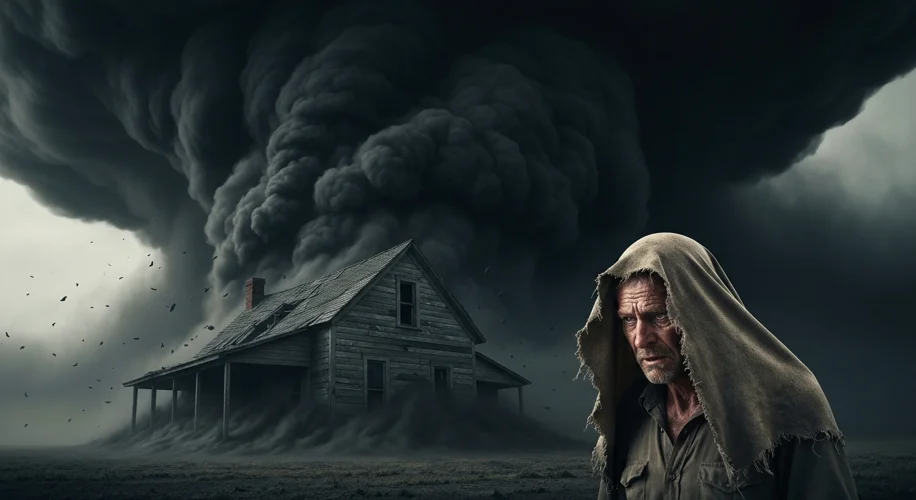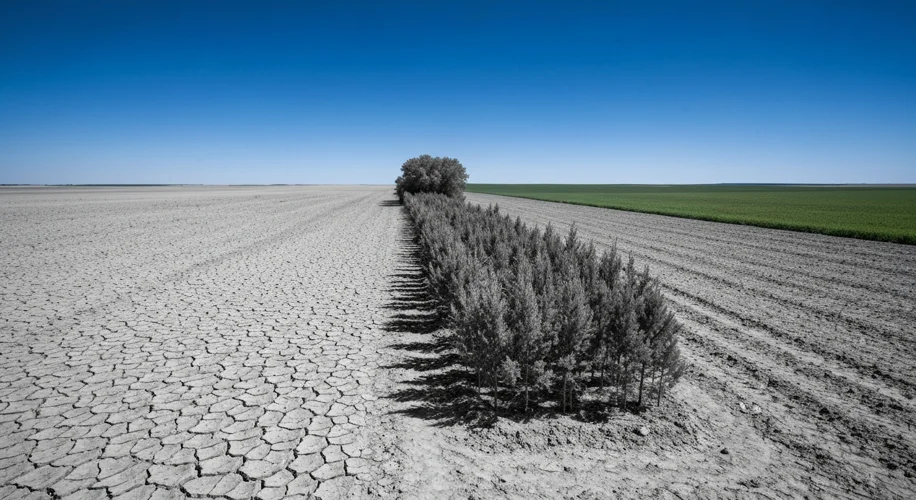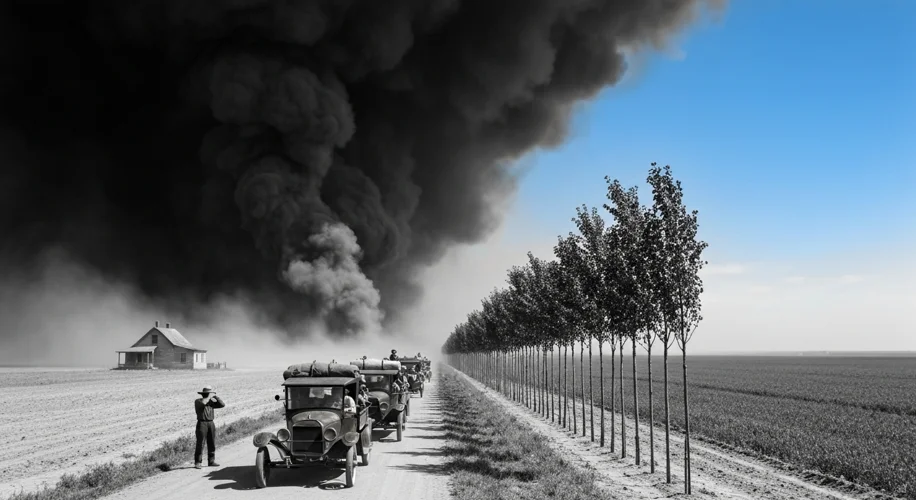The year is 1935. The sky over the American Great Plains, once a boundless canvas of blue, is now a perpetual, suffocating shroud of ochre. It’s a scene ripped from a nightmare, a testament to nature’s fury amplified by human hands. This is the Dust Bowl, a man-made ecological disaster that etched itself into the very soul of America.
For decades, settlers had flocked to the Great Plains, drawn by the promise of fertile land. They tilled the earth, breaking apart the ancient sod that had held the prairie grasses and their deep, intricate root systems in place for millennia. This sod acted like a natural sponge, absorbing precious rainfall and anchoring the soil against the relentless prairie winds. But as agricultural technology advanced, so did the ambition. Mechanized plows ripped through the land, exposing the rich, dark topsoil to the elements. The thinking, born from a desire for progress and prosperity, was that the land was an inexhaustible resource, waiting to be conquered and cultivated.
The culture of the time, particularly during the booming 1920s, was one of boundless optimism and a belief in human dominion over nature. “Rain follows the plow” was a popular, albeit flawed, adage, suggesting that cultivation itself would somehow alter the climate and bring forth moisture. This belief, coupled with economic pressures to produce more crops, led to widespread unsustainable farming practices. Large-scale monoculture, where vast tracts of land were planted with a single crop, like wheat, further depleted the soil’s nutrients and left it vulnerable. When the inevitable drought arrived, the land, stripped of its natural defenses, was left defenseless.
The historical context is crucial: the 1930s were a decade defined by the Great Depression. Economic hardship exacerbated the environmental crisis. Farmers, already struggling to make ends meet, found their livelihoods literally blowing away. Families who had invested everything in their land watched it disappear in towering dust storms, known as “black blizzards.” These weren’t mere inconveniences; they were apocalyptic events. Imagine waking up to find your home buried under feet of dust, your water sources choked, and the very air you breathed a gritty, suffocating menace. The sky would turn black as night at midday, and the grit would find its way into every crack, every crevice, coating everything in a thick, abrasive layer.
The key actors in this unfolding drama were the farmers and their families, caught between an unyielding environment and a faltering economy. There were also the government officials, initially slow to grasp the scale of the disaster, and later, figures like Franklin D. Roosevelt and his administration, who sought to implement solutions. The perspectives were stark: for many farmers, it was a fight for survival, a desperate attempt to hold onto their land and their way of life. For others, the only option was to abandon their homes and join the mass migration westward, seeking work and a chance at a new beginning, becoming the “Okies” and “Arkies” immortalized in literature and song.

The event itself was not a single, sudden catastrophe but a prolonged period of ecological devastation. From roughly 1930 to 1940, the Southern Plains, in particular, experienced severe drought. This drought, coupled with the unsustainable farming practices, turned the exposed topsoil into dust. When winds blew, they picked up this loose soil, creating massive dust storms that could stretch for hundreds of miles. These storms were not just an inconvenience; they were deadly. Fine particles of dust infiltrated lungs, causing respiratory illnesses like “dust pneumonia.” Livestock choked and died, crops were buried, and machinery was ruined. The sheer scale of the dust was staggering. One storm in 1934 was estimated to have carried 300 million tons of topsoil, stretching all the way to Chicago and even impacting the Atlantic Ocean.

The consequences of the Dust Bowl were profound and far-reaching. It led to the largest migration in American history, as an estimated 2.5 million people fled the affected areas, primarily heading to California. This mass exodus created social and economic strains in the destination states. The agricultural sector was decimated, leading to widespread poverty and foreclosures. The ecological damage was immense, with vast areas of farmland rendered infertile for years. However, the disaster also spurred significant changes in government policy and land management. The Soil Conservation Service was established in 1935, implementing new farming techniques aimed at preventing soil erosion, such as contour plowing, terracing, and the planting of windbreaks. These measures, along with the eventual return of rainfall, helped to heal the land.

The Dust Bowl serves as a stark, enduring lesson. It demonstrates the fragility of ecosystems and the devastating consequences of human actions when they disregard the natural world. It highlighted the interconnectedness of environmental health, economic stability, and social well-being. The stories of resilience, of families holding onto hope amidst utter devastation, and the subsequent governmental reforms, all contribute to the complex legacy of this period. The Dust Bowl was more than just a drought; it was a wake-up call, a brutal reminder that the land we depend on requires respect and careful stewardship, lest we invite nature’s wrath amplified by our own folly.

